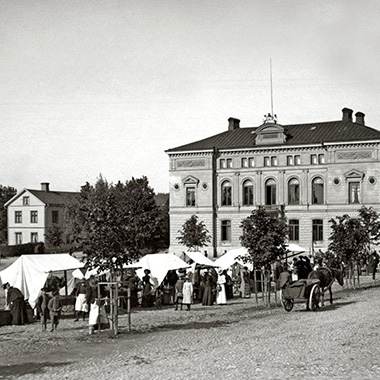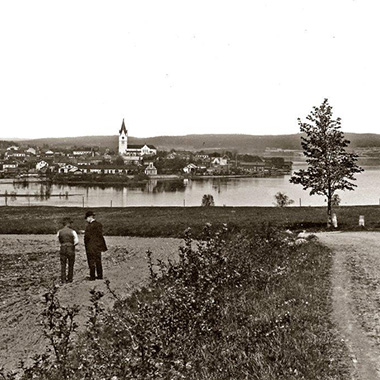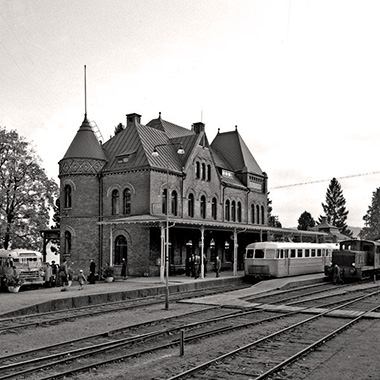- Startsida
- / Welcome to Nora!
- / About Nora
- / The history of Nora
The history of Nora
The foundation of the prosperity in Bergslagen and Nora was mining, there is both ore and forest, which are necessary for the production of iron.
Noraskog - Nora forest was from the outset a parish name that can be traced back to the 1300s. But Nora parish was fairly insignificant for a long time, in the 1540 tax register there were only 12 tax-paying households. With the help of Gustav Vasa, Nora attained a higher status. He decided that the miners in the district should sell their iron here, and market trading should be conducted on Saturdays. In this way Nora Parish came to flourish until the devastating town fire of 1608. Then 33 of the village’s 44 homesteads lay in ashes. Nora eventually recovered from the fire, partly with help from the government.
However, there were other plans for the district. During the guardianship of Queen Kristina, the adviser on matters of town privileges, Baron Karl Bonde, proposed that a canal be built to Bergslagen from Mälaren via Hjälmaren. His idea was to move Nora residents and those of the neighbouring town, Lindesberg, to a completely new town, Järle. This is where the canal would be directed and it would be the centre for the shipment of iron from Bergslagen. Järle received its town privileges in 1642 whereupon more detailed planning for canals and locks was set in motion. Then came the directive to the inhabitants of both parishes to move to the new town. It got no further, the residents absolutely refused to move.
Instead Nora got its town privileges in 1643. To further the town’s importance, Nora became the residence town in 1643 of what would be Nora County. It was short-lived and ended in 1648. However, Nora grew slowly and the reminders of this time are reflected in the characteristic grid system of the town centre.
On the morning of 29 April 1731 a fire started in a property on Svartälvsgatan. The fire spread fast and so well that the whole of Nora was levelled, when the fire died out the church stood almost alone though also damaged in parts. The residents of Nora slowly built their town again and by 1746 the traces of fire had almost all disappeared.
In 1856 Sweden’s first standard gauge railroad for passengers between Nora and Ervalla was opened. It would later be connected to the Köping-Hult railway and soon it was evident how important this form of transport would be for the district. Money flowed in and the wealthier in Nora and its surroundings decided that a town of Nora’s standing should have a church appropriate to it. The old church with medieval origins was demolished, a new church was built and inaugurated on 31 October 1880.
Perhaps there should never have been a new church. Three years previously, the iron had been offered at the reduced price at the Hindermässan fair in Örebro, but there had been no takers. In 1879, the Enskilda Bank of Stockholm bankrupted parts of the Carl Herman Wedberg’s works. He was the son of the “King of Nora”, Anders Wedberg.
Even though Wedberg was one of the most powerful men in the district, he like a number of owners and well-to-do citizens in Nora, had signed guarantees and promissory notes. Matters now developed into what appeared to be a grim game of dominoes, when the first fell it wasn’t long before the others followed into bankruptcy.
The mining was still there, mainly in Pershyttan’s and Striberg’s mining fields. However other industries became important and around 1920 Nitroglycerinbolaget (the Nitro-glycerine Company) in Gyttorp became a dominant industry.
Source: En vandring i Nora (A Walk in Nora) by Claes-Göran Wetterholm




